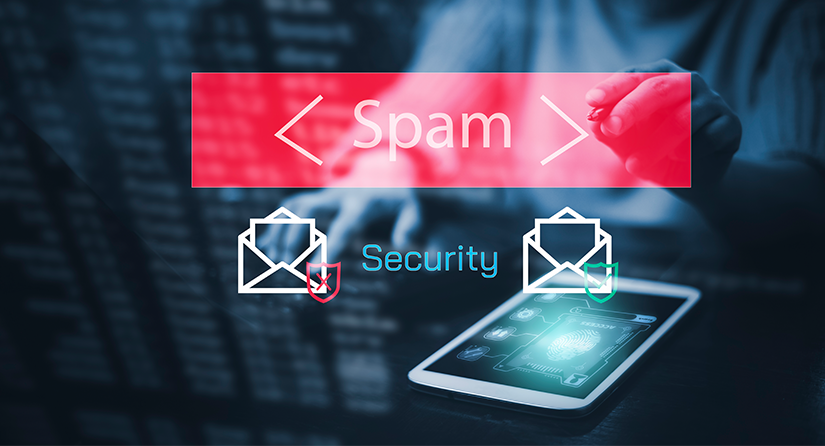Email Spoofing – How to Detect and Prevent Email Spoofing?

Email spoofing is a deceptive practice where attackers send emails with forged sender addresses to trick recipients into believing they are from a legitimate source. This technique is commonly used in phishing attacks, where cybercriminals aim to obtain sensitive information or initiate fraudulent activities. To protect yourself and your organization from email spoofing, it is essential to understand how it works, recognize the signs, and implement effective preventive measures. In this blog post, we will explore the various aspects of email spoofing including detection techniques and strategies to prevent email spoofing.
Understanding Email Spoofing
Email spoofing involves altering the email header and sender address to deceive the recipient into thinking that the message is from a trusted source. Attackers often mimic well-known organizations, government agencies, or colleagues to gain the recipient’s trust and increase the likelihood of their malicious actions succeeding.
To prevent email spoofing, perpetrators take advantage of vulnerabilities in the Simple Mail Transfer Protocol (SMTP), the standard email protocol. By exploiting weak authentication mechanisms, they can manipulate the “From” field and include any desired sender information. In some cases, they may also use domain name spoofing, where they forge the domain name of the sender’s email address. Here are some essential points about email spoofing:
- Email spoofing is not limited to the “From” field: While the “From” field is commonly spoofed in email spoofing attacks, email spoofing can also involve manipulating other email header fields such as the “Reply-To” or “Return-Path” fields. Attackers can use these fields to redirect replies or bounce-back messages to different addresses, further deceiving the recipient.
- Email spoofing can occur without hacking an email account: Contrary to popular belief, email spoofing attack does not necessarily require hacking into a legitimate email account. Spoofed emails can be sent without compromising the sender’s email system, as attackers often manipulate the email header information using readily available tools or services.
- Spoofed emails can bypass spam filters: Advanced email spoofing techniques, such as domain name spoofing and email header manipulation, can enable malicious emails to evade traditional spam filters. Attackers may use legitimate domains or impersonate trusted senders, making it more challenging for spam filters to detect and block these spoofed emails.
- Email spoofing is not just used for phishing: While phishing is a common use case for email spoofing, attackers can leverage spoofed emails for various malicious purposes. These include distributing malware or ransomware, launching social engineering attacks, initiating business email compromise (BEC) scams, or even conducting targeted spear-phishing attacks against specific individuals or organizations.
Detecting Email Spoofing
- Check the sender’s email address: Pay attention to slight variations in the email address that may indicate spoofing attempts. Look for misspellings, additional characters, or unusual domain names.
- Verify the email header: Examine the email header to identify any inconsistencies or anomalies. Look for discrepancies between the “From” field and the actual sender’s IP address or domain name.
- Analyze the email content: Scrutinize the content of the email for poor grammar, spelling errors, or unusual requests that deviate from the sender’s normal communication style.
- Inspect the email links: Hover your mouse over any embedded links without clicking to view the actual destination URL. If the link appears suspicious or leads to an unfamiliar website, it may be an indication of email spoofing.
- Examine email headers for authentication: Implement technologies like DomainKeys Identified Mail (DKIM), Sender Policy Framework (SPF), and Domain-based Message Authentication, Reporting, and Conformance (DMARC) to validate the authenticity of the email’s source.
Preventing Email Spoofing
- Implement email authentication protocols: Enforce the use of email authentication protocols such as SPF, DKIM, and DMARC. SPF validates the sending server, DKIM verifies the email’s integrity, and DMARC provides a policy framework for handling authentication failures.
- Educate employees and users: Conduct regular training sessions to educate employees and users about the dangers of email spoofing. Teach them how to identify suspicious emails, avoid clicking on unknown links, and report any suspected spoofed emails promptly.
- Enable multi-factor authentication (MFA): Implement MFA for email accounts to add an extra layer of security. This ensures that even if an attacker obtains the username and password, they would still need an additional authentication factor to access the account.
- Use email filtering and anti-spam tools: Deploy advanced email filtering and anti-spam solutions to automatically detect and block spoofed emails. These tools can help identify and quarantine suspicious messages before they reach users’ inboxes.
- Regularly update and patch software: Keep all email server software, operating systems, and security solutions up to date with the latest patches. Regular updates help address vulnerabilities that attackers could exploit for email spoofing.
- Implement strict DMARC policies: Configure DMARC policies to specify how to handle emails that fail authentication checks. Set policies to reject or quarantine such emails to prevent them from reaching the recipient’s inbox.
- Monitor email traffic: Implement real-time monitoring of email traffic to identify unusual patterns or activities. Unusual spikes in email volume or delivery failures can be indicators of email spoofing attempts.
- Encourage reporting of suspicious emails: Create a culture of reporting among employees and users. Encourage them to report any suspicious emails promptly to the IT or security team for investigation.
Conclusion
Email spoofing is a serious threat that can lead to significant financial losses, data breaches, and reputational damage. By understanding the techniques used in email spoofing, detecting the signs of a spoofed email, and implementing preventive measures, individuals and organizations can significantly reduce the risk of falling victim to such attacks. It is crucial to remain vigilant, educate users, and stay updated with the latest security practices to prevent email spoofing effectively. Remember, a proactive approach to email security is key to protecting sensitive information and maintaining trust in digital communications.
